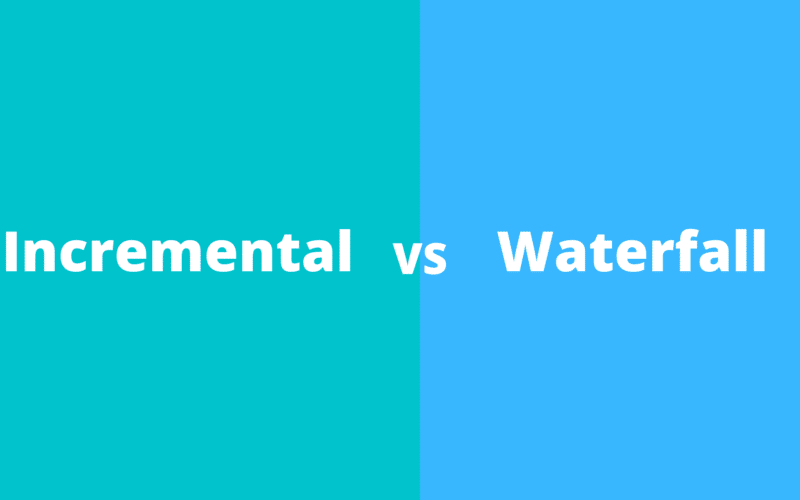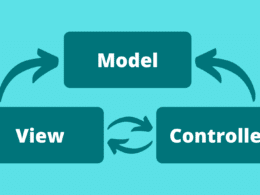What are the key differences to consider between the waterfall and incremental development method or model when talking about software engineering?
Both of these models are followed in order to make the software development process more systematic and ensure that the tasks are managed more strategically. Hence, both models essentially divide the whole software development work into smaller, parallel or sequential tasks or subprocesses to enhance product management.
All in all, these processes models provide a conceptual view of the entire software development life cycle (SDLC) that’s employed. Thus, it shows the developer each software development step or task that they have to perform. However, each of these software development processes differs in terms of the order of these steps and their structure.
Therefore, in this article, we’re comparing and looking at the key differences between the waterfall and incremental development model from a software engineering context and the benefits of incremental development in comparison to the waterfall model. Both of which are fairly standard and common development models that developers tend to follow.
Table of Contents
What is an Incremental Development Model?
In short, an incremental development model is a software development method in which the system is designed, implemented, tested and improved gradually and in increments until its finishing point. So, those are the 4 main phases or development activities that form this model, which are specification, development (contains design and implementation), validation, and evolution.
These phases are said to be interleaved, meaning that each increment goes through these steps sequentially. So, the incremental development is performed in a parallel or tandem manner.
That being said, its main differentiating factor is that the system is developed in several increments, also termed as builds. These increments are functional and can be used by the stakeholder. Thus, they possess certain intended functionalities of the final system that can be tested by the stakeholders.
For more information on the Incremental Development Model, its uses, advantages and disadvantages, we recommend checking our other guide here.
What is a Waterfall Development Model?
On the other hand, a waterfall model consists of a few distinct phases of specification and development that are completed sequentially from start to finish. So, it’s considered the classical or traditional model as all tasks are completed sequentially in one cycle and there is little to no return any of the previous stages. Hence, the flow of phases resembles that of a waterfall – giving it its name.
These characteristics make it more suitable for completing smaller projects than complex ones with a broader scope.
Benefits of Incremental Development Compared to the Waterfall Model
Now that we have a general idea of what both of these software development processes entail, we’ll have a clearer understanding of how both of them differ. That being said, there are a few reasons or benefits why a developer would choose to employ an incremental development model in contrast to the waterfall model:
An Incremental Model Allows Software Changes to be Performed More Easily and Cost-Effective
First and foremost, in an incremental development model, it’s easier, cheaper, and less intrusive to accommodate changes after a particular process or stage is complete. For the waterfall model, a phase must be complete before proceeding to the next, making it inflexible to change and difficult to cope with changing customer requirements. This makes the waterfall model unsuitable for large-scale projects and the incremental development model is more optimal.
Plus, the cost to accommodate the changes in customer requirements is far lower in the incremental development model. Mainly because the amount of analysis and documentation that’s to be performed to redone is lesser than required in the waterfall model. Overall, the main benefit of an incremental development model is that it is relatively easier to incorporate changes into this system.
An Incremental Model Ensures it’s Easier to Obtain Customer Feedback
Moving on, it’s easier to obtain feedback from the customer on the development work and progress achieved. Since there are incremental versions of the system, the customer can review and comment on the demonstration of the software.
Plus, they can see the progress made and the degree of completion of the program’s implementation. Hence, each of these early increments acts as a prototype for the customer to test and helps them elicit requirements that can be added in the later increments.
Overall, since high priority services are delivered first followed by integration of increments, these main services undergo the most testing. Hence lessening the risk of an overall project failure, especially in the event of a requirement change. Also, this ensures it fulfils the customers changing requirements and isn’t subject to any errors.
An Incremental Model Allows the Use and Deployment of the System’s Early Builds
Thirdly, an incremental development model allows the customer to obtain value from the system earlier, without having to wait for the entire system to be implemented, completed, and delivered. Thus, if the first increment is able to satisfy the main requirements that were predetermined, they can begin deploying it for customer use.
In contrast to the waterfall development model where it only has a single delivery which is the final system, for incremental development, as there are multiple increments, each increment has its own deliverables. So, each increment delivers part of the required functionality, where the most important or urgently needed requirements are incorporated first, especially user requirements.
Usually, the first version (initial version) or deliverable of the incremental model comprises the core product, then the supplementary features will be developed and incorporated in the following increments. Overall, the delivery of useful software is faster than in the waterfall model, which only sends out its deliverables once all the phases are completed. Whereas in the incremental model, each increment serves as an added value for the customer.
At the same time, delivering the final system in operational parts can boost the customer’s morale and trust, since they’re actively being involved in the development process and can see their requirements being fulfilled. This is especially crucial for products that need to be unveiled to market early.
Other Differences
The following table highlights other differences that we’ve come across when comparing both types of software development models:
| Waterfall | Incremental | |
| Flow of Phases | Phases are completed from start to finish (sequential manner) in one cycle. Has a linear-sequential and continuous design approach. | Phases are sequentially completed at every increment (parallel) in multiple cycles (increments). Has a sequential-parallel design approach. |
| Documentation and Planning | Requires detailed preliminary documentation and planning. | Requires documentation and planning, but not as extensive as its waterfall counterpart. |
| Associated Risk | High risk. | Low risk. |
| Waiting Time to Begin Using Software | Longer waiting time. The software can only be used, tested or reviewed when the cycle of software development phases nears its end. | Shorter waiting time. This is because the earlier builds are functional although they have limited functionalities, allowing them to be released for tests and reviews by the client/end-user. |
| Deliverables | A functional version of the system is delivered at the end of the development life-cycle. | A functional version of the system is delivered at the end of every iteration. |
| Stakeholder/Client Involvement | Clients or end-users are involved at the first (specification) and last phase (user testing) of the development life-cycle. | Clients or end-users are involved at the beginning and end of every iteration. |
| Flexibility | Less flexible. This model is relatively more difficult to accommodate changes as there is only 1 cycle of development, so it’s difficult for users to test the system, propose and elicit requirements. | More flexible and easier to accommodate system changes. Clients can review builds and elicit and suggest additional requirements or features to be added in the subsequent increment of development. |
| Cost, Development Time Frame and Complexity | Less because there’s only one cycle of development and typically caters to smaller projects. | More because there are multiple cycles of development as every iteration needs to be functional. |
| Returning to Previous Phases/Retracking | Less or not possible. | Possible. Incremental development allows for multiple iterations of development phases (specification, development, validation, evolution). |
| Overlapping of Phases | Doesn’t allow phases to overlap. | Allows phases to overlap in the development cycle. |
| Team Size | Requires more members in the development team. | Requires relatively fewer members in the development team. |
| Number of Cycles | Consists of one cycle of development from start to finish. | Consists of multiple cycles of development (specification, development, validation, evolution) throughout the project. |
| Testing | The testing phase is conducted towards the end of the lifecycle or after the development stage is completed. | Testing is conducted at the end of every iteration cycle, so it may be performed multiple times in the development of a project. |
| Maintenance | The least maintenance is performed. | Promotes maintenance and maintainability of the system. |
Conclusion
Needless to say, both forms of software development processes have their uses and benefits that make them more suitable for a particular software development project than the other.
Therefore, this guide goes into detail in explaining what exactly are the incremental and waterfall development models and their noteworthy differences from a software engineering standpoint. It also explains the benefits an incremental development provides, in comparison to the waterfall model.
That being said, we hope that you’ve found value in this guide and it’s been helpful in bolstering your understanding of software development processes and the incremental and waterfall model.
Feel free to share this post with your fellow coders and software engineers!
















